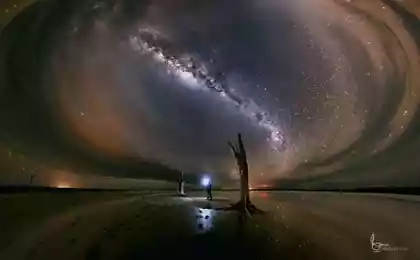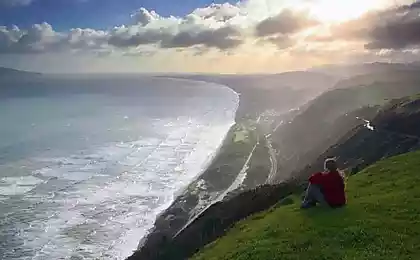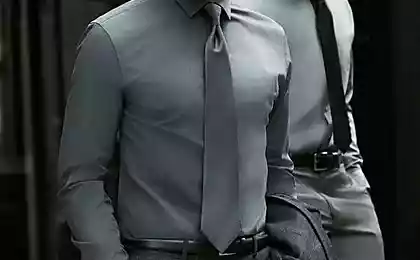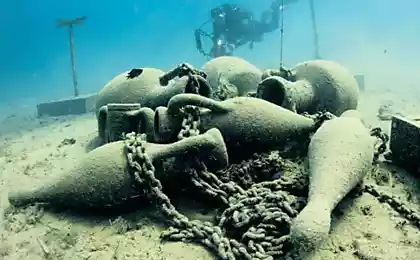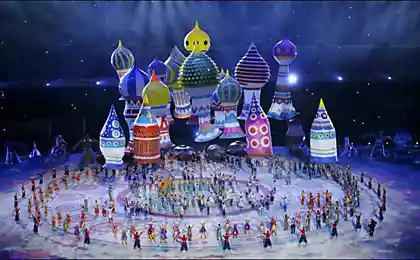913
In the footsteps of the great civilizations
In Turkey it is not driven just lazy. For most people, Turkey is associated with the "Russian cattle" and hotels "all inclusive" for a ridiculous price. But we have chosen for myself this country thanks to its historical heritage (which, alas, in Russia know not many), and for its natural features, which have no analogues in the world. I want to share with you pictures of vacation, perhaps, something of interest for you, revealing a new side of Turkey).
Throw in the room things went for a walk at night Istanbul. Life is in full swing, as if the height of the day. He struck a good urban transport. And this is the Hagia Sophia Mosque.
Will 138 photos

The first night in Istanbul gradually fascinates us, everything was different - the architecture, the paint, the streets, the people, the smells, and the air itself! Moving from the cold again in the summer, we enjoyed this walk.

Photography inside the Blue Mosque, the largest turned out, alas, boring. But the size of her painting is very delighted. The guide told many interesting facts, history and nature of the construction practices.

Inside the Blue Mosque.

The original Egyptian obelisk. It was erected in the XV century. BC. e. under Pharaoh Thutmose III. Egyptian obelisk is one of the oldest monuments that are located not only in this area but also, perhaps, throughout Istanbul.
Due to its impressive size, the obelisk was not exported from Turkey during the periods of raids Crusaders. Multiple copies of this architectural monument are in Egypt, and in the largest cities of Europe. Recurrent earthquake, whose strength was up 6-7 on the Richter scale, took place in Istanbul every 100 years, could not change the original appearance of the obelisk.

Seeing the Hippodrome, head to the Byzantine Yerebatan reservoir. It was built in 532 on the orders of the emperor of Byzantium. Yerebatan impresses with its size, it is even called the sunken palace.

336 marble columns here! As the water runs down the columns, in the water a variety of live fish. Music inside the reservoir attached to a mystical atmosphere. Reminded Phantom of the Opera)

The head of Medusa the Gorgon. So far it is unknown from which the ancient temple were removed two statues of the Gorgon.
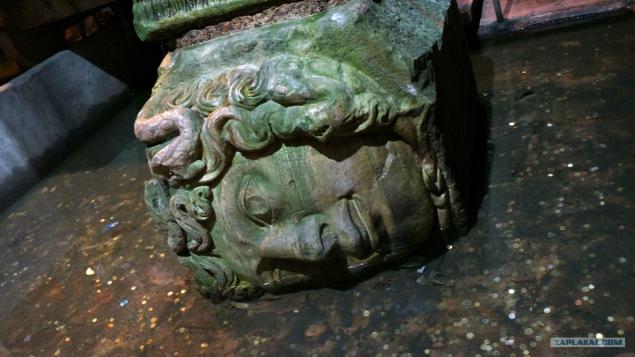
Go for a walk through the streets of Istanbul.

Moving on to the Topkapi ...
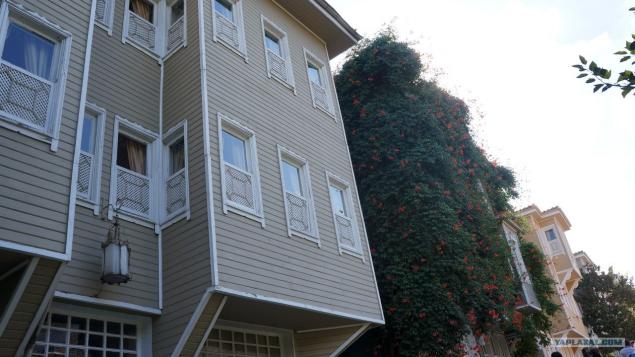
And then ...

We came to the square.

Entrance to the Topkapi Palace complex. Who watched "Magnificent Century" - soon learns gate), they reminded me of Disneyland))))

The layout of the palace complex) We walked everywhere! Really liked the Treasury, which, of course, it was impossible to shoot. In it, by the way, it kept the fourth largest of the existing diamond.

It offers magnificent views of the Bosphorus. Sultan Suleiman loved to look at it from this balcony.

View from the balcony. Just look just breathe!

Walking on the territory of the palace complex.

Rooms.
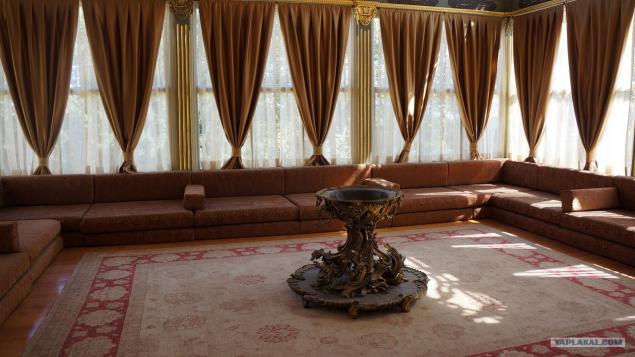
more ...
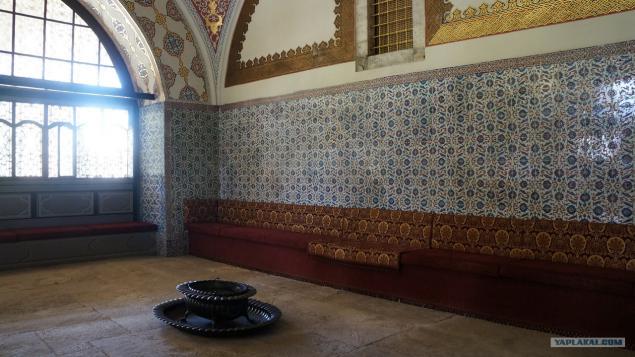
The ceilings in the palace.

Topkapi.

After another walk, we headed to Ankara - the capital city of Turkey. The first, where we are heading - Fortress Ankara. Around a variety of souvenirs for a penny.
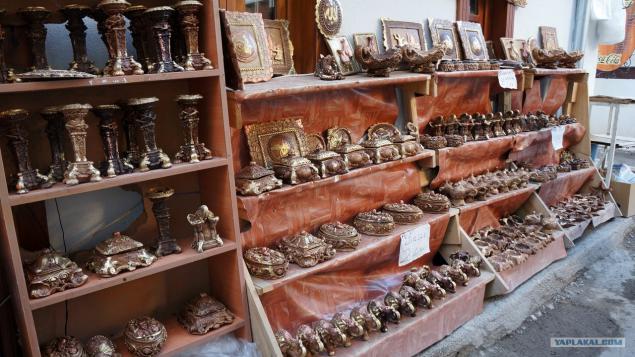
View from the fortress. It laid the Hittites - an ancient people, and after finishing work the Greeks, Romans and Byzantines. Later, during the campaigns of the Seljuk Turks it was invaded by Turkish troops already.

Inside the fortress is a few houses of the XVII century, baths and even the remains of the aqueduct. The wall is located 20 powerful towers, from which in ancient times looked out for enemies.
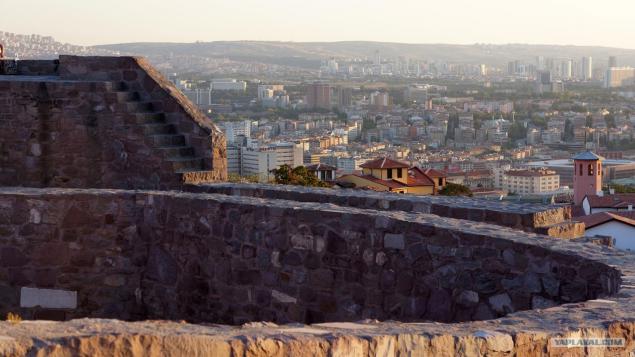
Ankara Fortress.
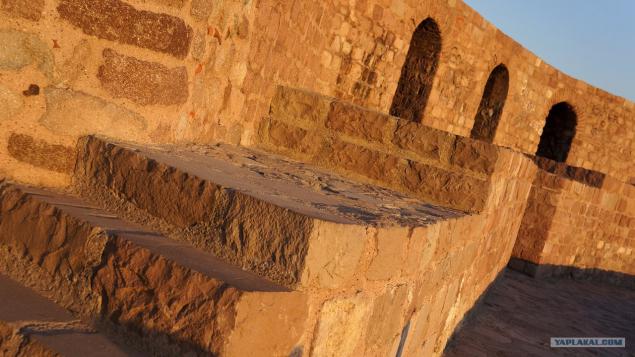
Left for a walk).
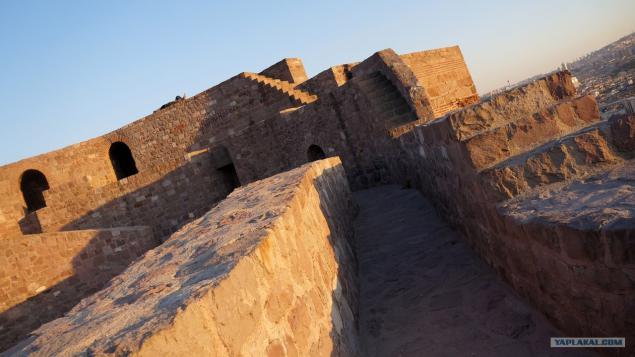
To penetrate the atmosphere. I love ruins and archeology, what can you do))).

In the morning we visited the Museum of Anatolian Civilizations - one of the richest museums in the world, Turkey's main historical museum located in its capital city of Ankara. The museum contains a collection of Neolithic, Bronze Age civilizations of Assyria and Urartu, Hittite and Phrygians, Ancient Greece and Rome, the Byzantine Empire, the Ottoman Empire. Museum of Anatolian Civilizations won the prize "European Museum of the Year" in 1997.
This is a letter in an envelope).

Go to the mausoleum of Ataturk. In modern Turkey, Ataturk is revered as a military commander, to preserve the independence of the country, and as a great reformer.

Entourage. By the way, I live in Volgograd, we have the famous panorama, so that's worked on it the same artists that created the panorama in the mausoleum of Ataturk. (With a huge mausoleum museum with paintings, sculptures, panorama, etc.).
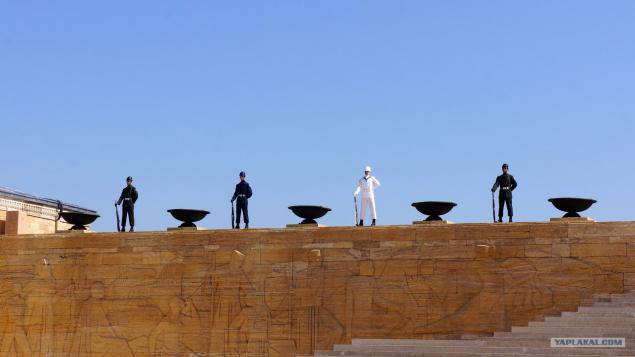
We head for the Hattushash - the ancient capital of the Hittite Kingdom. Ancient city discovered in 1834, the excavations carried out since 1906. In 1986 Hattusa excavations were included in UNESCO World Heritage Site.

Excavations in the area have a total area of about 160 hectares and can be divided into several participants. In ancient times there was a trade route from the central Cappadocia to the Black Sea.

I wandered through the ruins of an ancient temple of the Hittites, feeling the ancient history of the whole being.

More ...

Lions Gate.
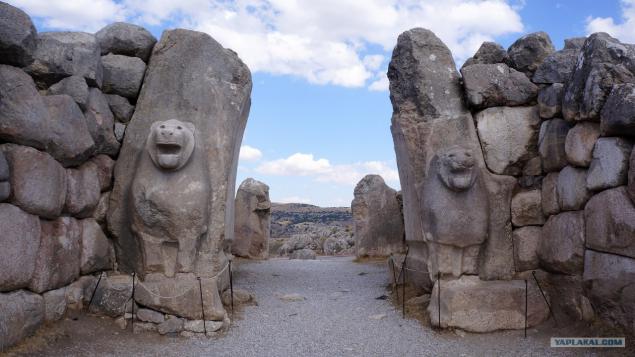
The rise of the pyramid of the Hittites.

The face of the pyramid. Climb on to see the beauty.
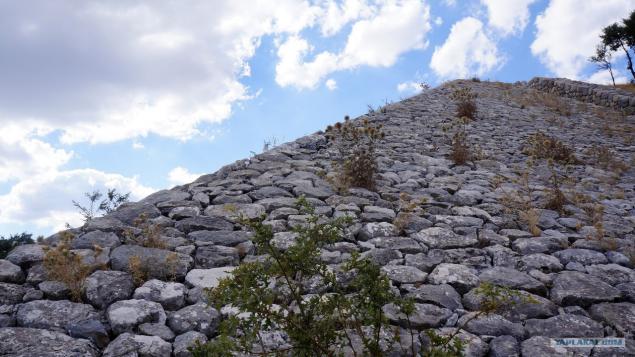
There
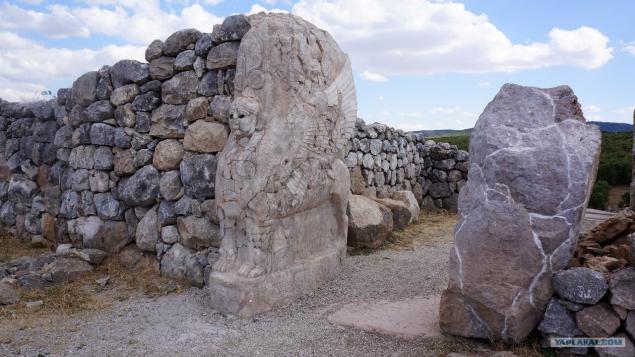
Wall

All this is spread Hattushash. I'm from such a spectacle is breathtaking ...
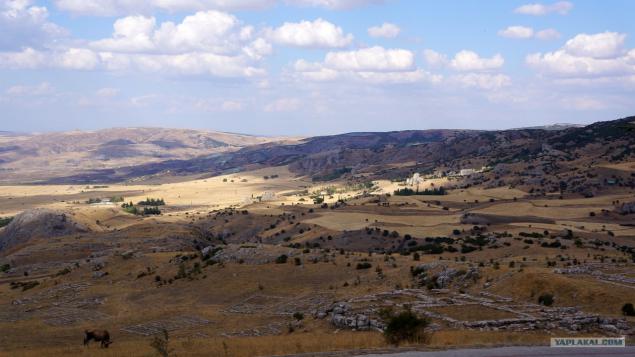
Go to Yazylykay - Hittite sanctuary in the rocks near Boğazköy in Central Anatolia. When you see here is a boulder above his head - becomes not joking!

And this is a school of dervishes! My dream - to see a real live dance of the dervishes. And before her execution - in minutes!

Filmed, as well as all the fun - it was impossible. Well, here it is clear - too sacred. Seeing Sufi whirling, I clearly understand why all filmed dancing I was not too impressed. Phonogram and cafes - this is not the dance of the dervishes.
Well, then, we drank sherbet and saw the installation of Cappadocia.
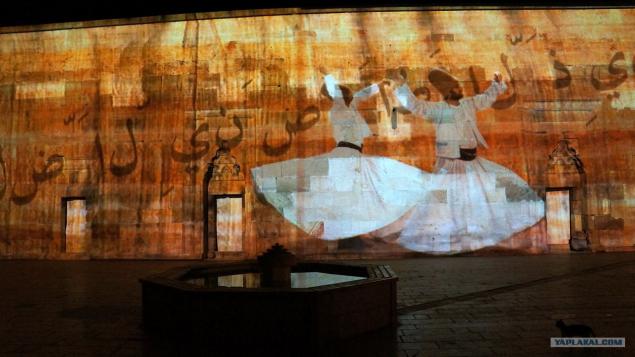
Tomorrow is another, our dream will come true ... I can not wait! Get up had early - at 4:15 in the morning. But I was waiting for this, that already jumped! Most would !!! Here they are, sweetie ...

Breathing has long intercepts !!!

Ihha !!! Fly !!! Our take-off area behind us ...
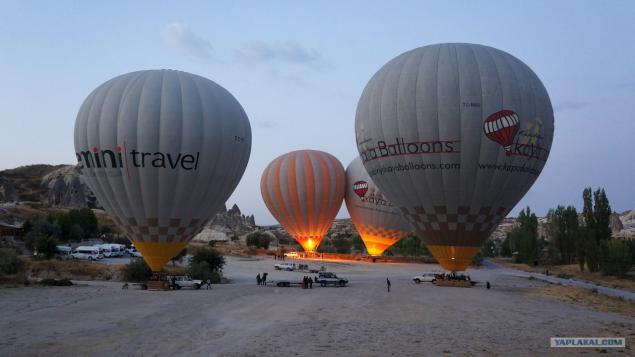
Farther and farther, higher and higher!

Cappadocia!

We are like on another planet ...

Past these giants - towards dawn!

Looking down

Just reviewing the photos, I feel a shiver ... I Forgive me my emotions!

If you think - what is sand - something wrong. It is a stone formed from volcanic activity.

Below us sometimes we flew the same curious guys like us).

No wonder they say that nature - the best painter!
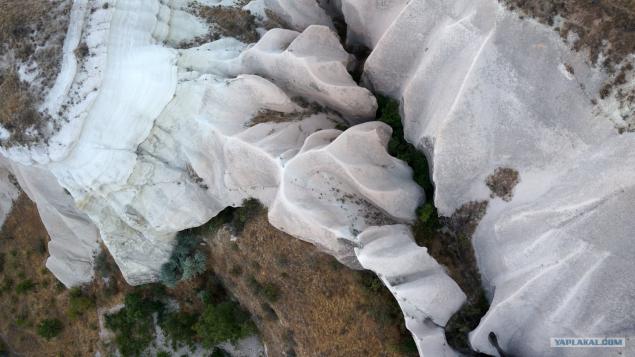
Madly I like what I see. Such natural bends, forms, colors.

At some point, the movement of the balls slowed and stopped altogether. We met at dawn km altitude.

Dawn.

Another view.

And now, the sunrise, we start to climb!
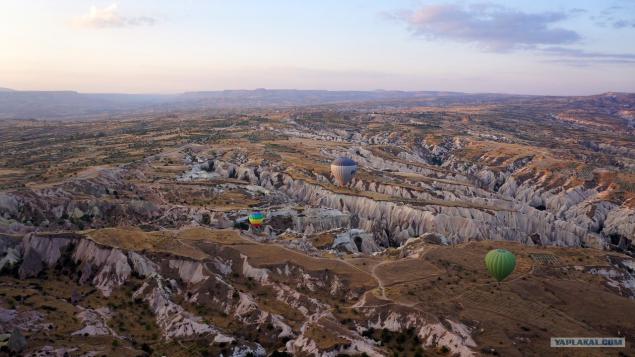
Red Valley, Red Canyon.

Beauty.

Who found the crater?))

After a soft landing we were greeted with applause, brand champagne and certificates issued flight!
And every time in my dreams over Cappadocia sunrise ...
From now on, what would we have not inquired,
I would like to give to all the questions one answer:
"We are the ones who flew on the ball !!!»
As soon betray the memories
And you want to shout for joy - it was!
Dreams come true and all - as we want!
So stuck that still has not let go)))

After reassuring the flight, we are full of energy and emotion, we go on a tour of the ancient monasteries of Cappadocia - Orthodox Christianity was born here.
Such outlandish landscapes impossible to admire!
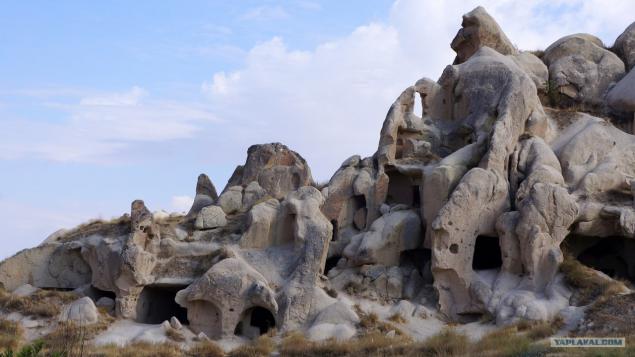
Monasteries.

Each time, seeing in front of another door, you ask yourself - what is behind it waiting for you at this time? .. Shoot, of course, the coolest places you can not - but I surreptitiously made the frame and be caught))) Such paintings in a lot of churches, they are not restored - they are what remain. And kept in such good form thanks to the natural conditions, of course.

Canteen.

Inside the next room
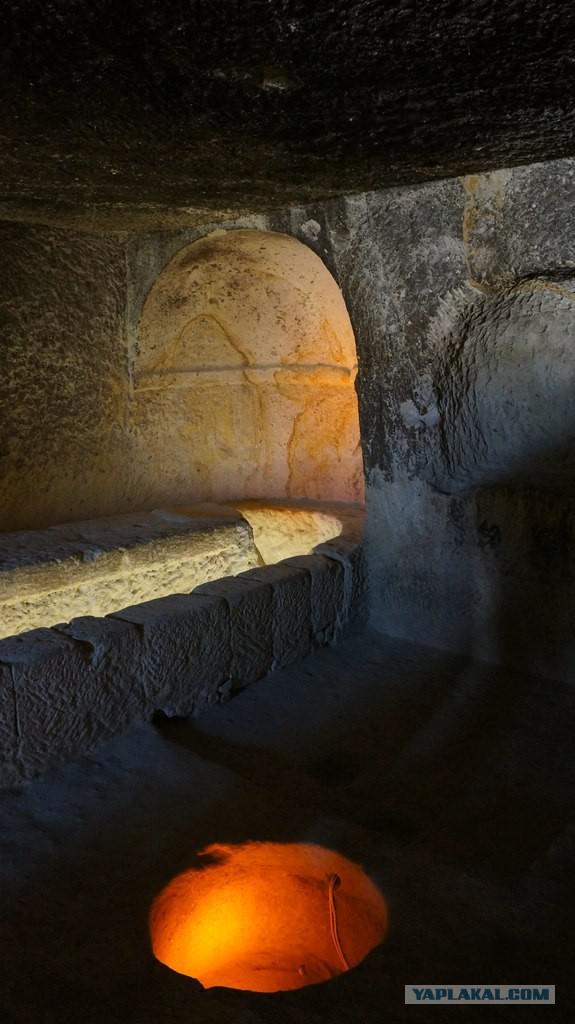
yet.
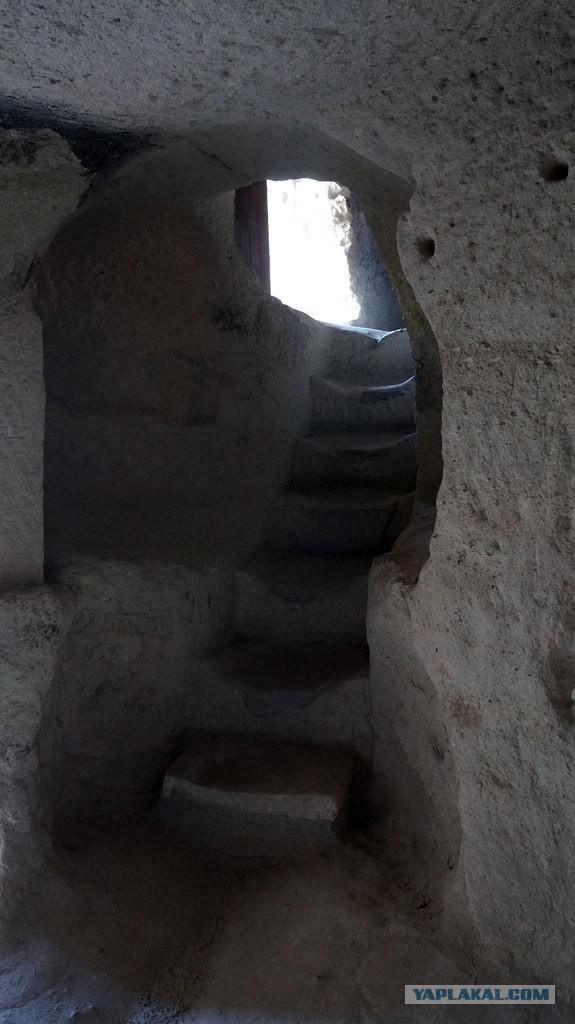
On and on, curiouser and curiouser!

Surreal Cappadocia.

Would you like a souvenir to remember?

We go down to the underground city of Kaymakli - another masterpiece creations of human hands and the unsolved mystery until the end.
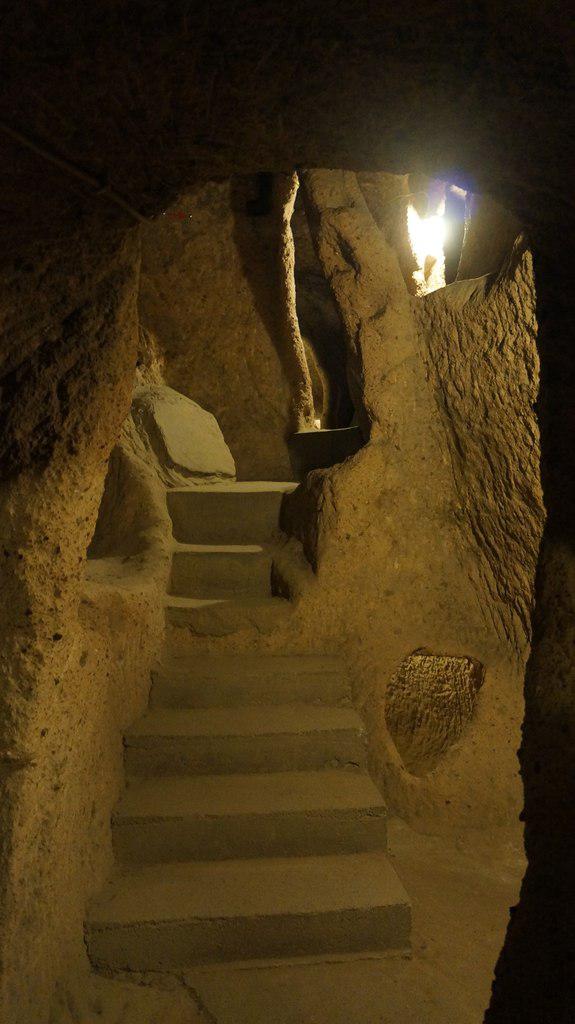
Another of the 5. BC history brought to us written evidence of the ancient writer: "... in populated areas houses were built underground. The entrances to these bottlenecks, but the interior is quite spacious. It also kept the animals. Houses are not noticeable for those who do not know where the entrance ... ».
Since ancient times, Cappadocia lay in the way of trade routes. Because of this, communities have lived quite lavishly, making them a tasty morsel for those who want to enrich themselves at their expense. Raids were made permanent. Local people came up with a very original way - to hide all the wealth, domestic animals under the ground. But not close the bunker, and huge underground cities, which accommodates several tens of thousands of people. There was everything: living quarters, stalls for animals, churches, chapels, kitchens, wells, cemeteries, storage, ventilation, and even the wineries, ie everything that allowed people to lead a normal life. In these cities, people could easily hide for several months. Local tuff soil is even contributed to these cities.
The photo millstone.
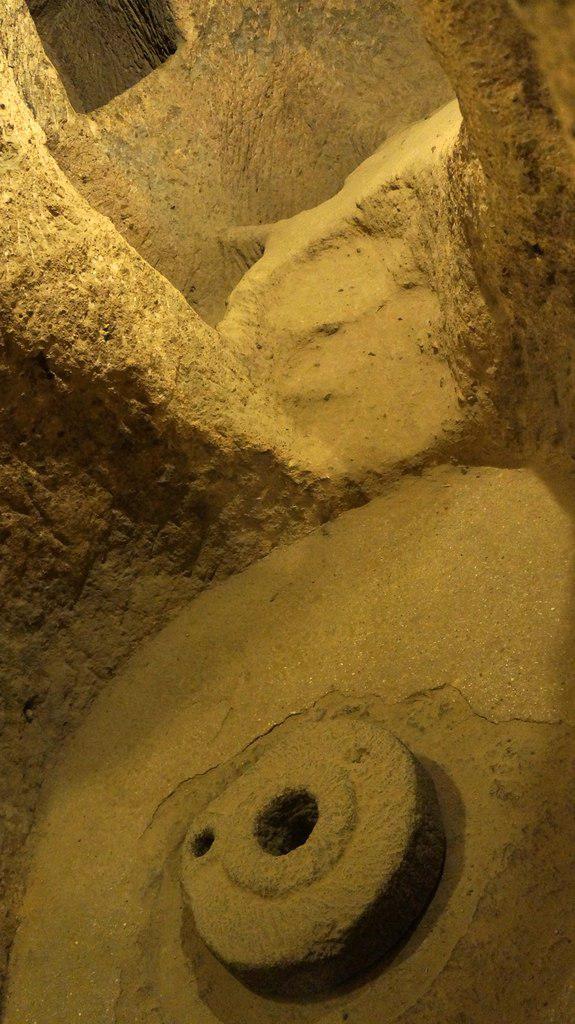
At this point in Cappadocia is known about 200 underground cities, calculated from a few hundred to tens of thousands of people. More or less studied about 30 underground cities .. We know that some leave the city on the 20th floor down (though perhaps more). But because of landslides, mud they were impassable. Although there is just something for sure, and the treasures were stored.

As a child, I was very interested - as ants live in an anthill? In Kaymaklı I felt like an ant)))))

Actually, when I was separated from our small group and wandered around the city - I really became terribly frightened.

Cappadocian stone mushrooms - only natural formations. The result of the activity of the five volcanoes.

Terrain - and asks for a picture. Or at least to the next photo)
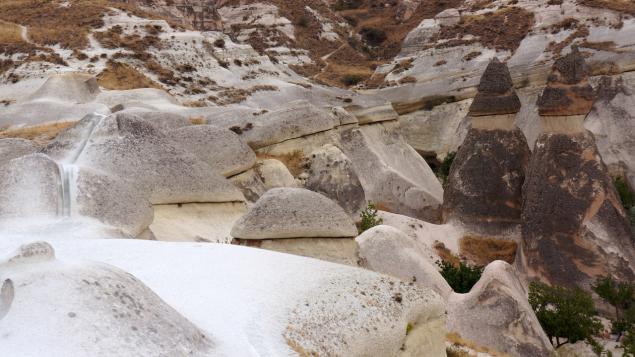
"Mushrooms" take many different forms.

Next, we visited a pottery workshop, where we were once again treated to the national drinks and even offered to make himself a pitcher)))

Such rooms on request - considered not count!

All convex patterns - and this is a very difficult technique. All by hand.

Across Turkey, no matter where we were selling products of this particular pottery. I love the color of malachite)).
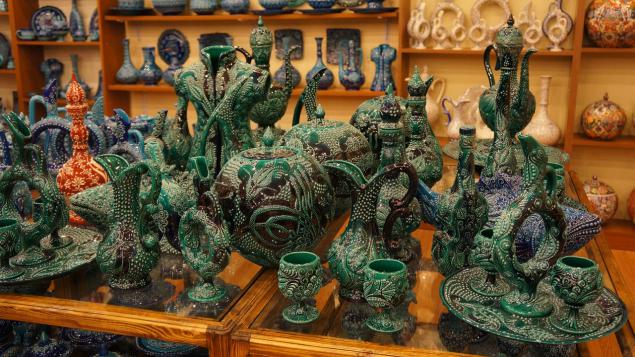
And that, dear readers, the Valley of penises))) Well, how then do not fall in love with Cappadocia ?!
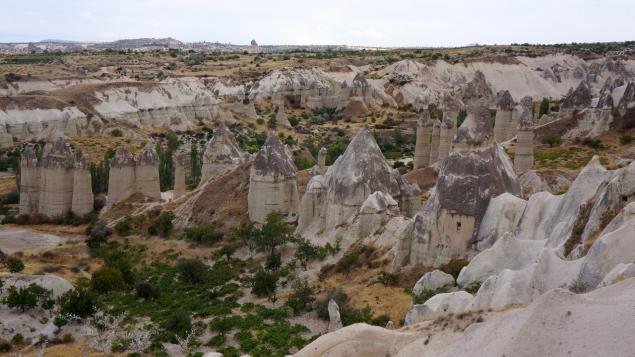
Inside caravanserai (palace on the trade route, a holiday home). A large public structure serves as shelter and parking for travelers, as a rule - for trade caravans. Sometimes luxuriously lined up, but no utensils, so that travelers had to carry a bed and carpets, as well as vital supplies for themselves and their animals.

Caravanserai.

Next - Mevlana religious complex - place where dervishes dance originated. It is an ancient oriental monastery monks shelter, poets and philosophers. Here, in these cells, it is shown as the dervishes lived. They rebuilt their life and kept their personal belongings preserved.
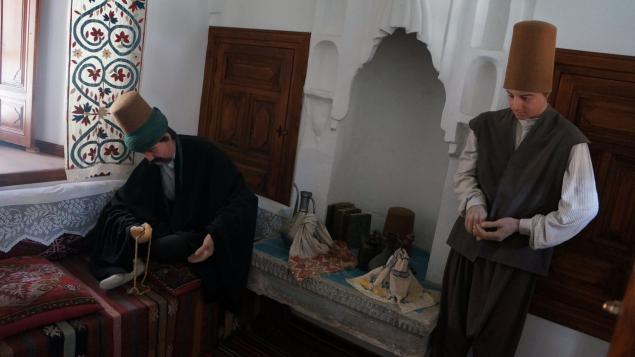
It was founded by Mevlana Rumi himself - his role in the great poetry of the East as well as Pushkin in Russian. Rumi, founder of the Order of dervishes dancing monks, in 1244 he met Shams Tabrizi and they formed the Mevlevi Sufi order. Rumi died on September 17, 1273, his mausoleum is still considered a holy place, and pilgrims regularly visit Konya, holiday dervishes satisfied at his grave Sema ritual ...

Bazarchik at the exit of the complex - not to miss another opportunity to earn the same on impressionable tourists?)

Necropolis Hierapolis - ancient city, the ruins of which are located 17 kilometers from the Turkish city of Denizli. The first buildings on the site of Hierapolis appeared in the 2nd millennium BC. e.
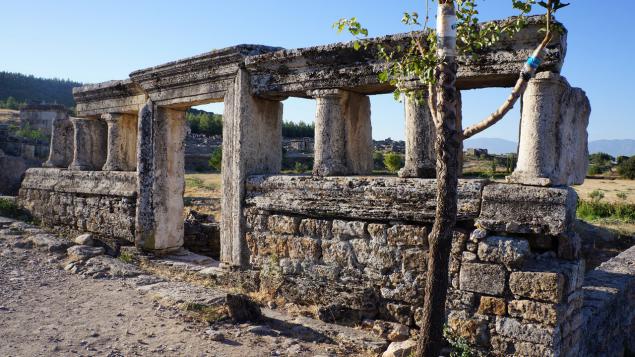
In 133 BC. e. the city came under the protection of Rome. in the 60 years I century BC. e. It is gaining prominence in the Roman aristocratic circles as a resort. There comes a flourishing city. The city played an important role in the spread of Christianity. In Hierapolis killed one of the 12 apostles - St. Philippe.

In 395, the city goes under the control of the Byzantine Empire. Constantine the Great made the city the capital of the region of Phrygia and at the same time the center of the bishopric. In 1097, the city was handed over to the Sultan of Turkey as war reparations. Later Hierapolis with the adjacent cities of Laodicea and Colossi is a disputed territory and several times passed from hand to hand. In 1354 a powerful earthquake completely destroyed the Thracian city.

Archaeological and restoration works continue in the present.
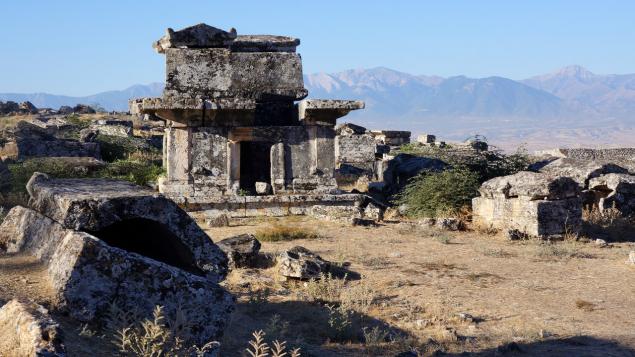
Necropolis Hierapolis. In such "houses" whole families were buried for centuries.

Entrance to the main square.

Archaeologists continue to collect time puzzles.

Main square.

I find it beautiful ... I hope that you see in the ruins of the same kind).
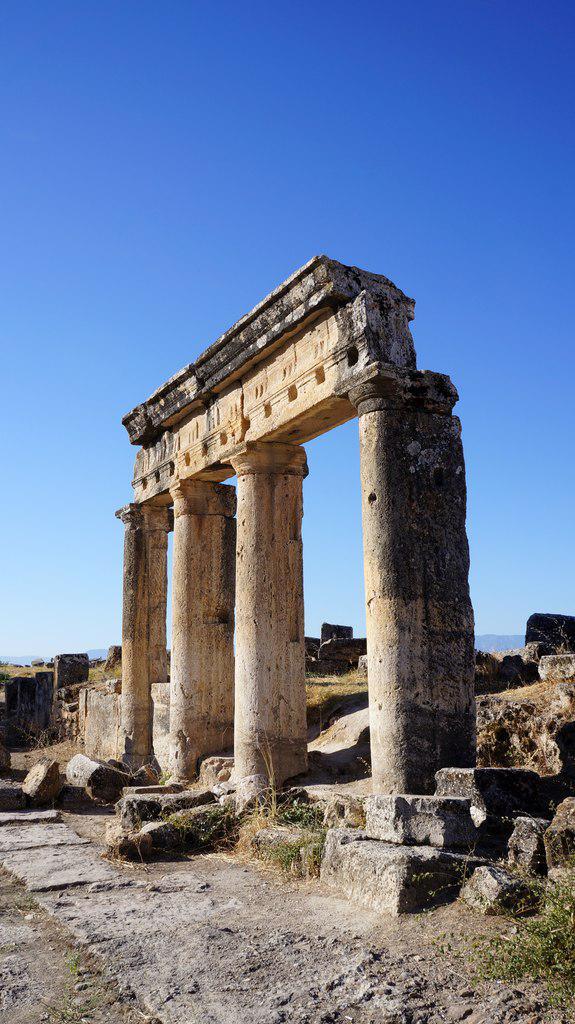
Hierapolis.

Hierapolis.

Water System Hierapolis - a huge area riddled with these ancient "pipe" like cobwebs.

Finally we Pamukkale! Quite a famous place among the Russian people, and there they were - the majority (I thought). They carry here excursion from Antalya and Alanya. Beautiful place, so let him carry on).
Pamukkale - a natural site in Denizli Province in southwestern Turkey. It consists of 17 geothermal springs with the water temperature from 35 to 100 ° C, ponds, terraces formed of travertine.

Source:
Throw in the room things went for a walk at night Istanbul. Life is in full swing, as if the height of the day. He struck a good urban transport. And this is the Hagia Sophia Mosque.
Will 138 photos

The first night in Istanbul gradually fascinates us, everything was different - the architecture, the paint, the streets, the people, the smells, and the air itself! Moving from the cold again in the summer, we enjoyed this walk.

Photography inside the Blue Mosque, the largest turned out, alas, boring. But the size of her painting is very delighted. The guide told many interesting facts, history and nature of the construction practices.

Inside the Blue Mosque.

The original Egyptian obelisk. It was erected in the XV century. BC. e. under Pharaoh Thutmose III. Egyptian obelisk is one of the oldest monuments that are located not only in this area but also, perhaps, throughout Istanbul.
Due to its impressive size, the obelisk was not exported from Turkey during the periods of raids Crusaders. Multiple copies of this architectural monument are in Egypt, and in the largest cities of Europe. Recurrent earthquake, whose strength was up 6-7 on the Richter scale, took place in Istanbul every 100 years, could not change the original appearance of the obelisk.

Seeing the Hippodrome, head to the Byzantine Yerebatan reservoir. It was built in 532 on the orders of the emperor of Byzantium. Yerebatan impresses with its size, it is even called the sunken palace.

336 marble columns here! As the water runs down the columns, in the water a variety of live fish. Music inside the reservoir attached to a mystical atmosphere. Reminded Phantom of the Opera)

The head of Medusa the Gorgon. So far it is unknown from which the ancient temple were removed two statues of the Gorgon.

Go for a walk through the streets of Istanbul.

Moving on to the Topkapi ...

And then ...

We came to the square.

Entrance to the Topkapi Palace complex. Who watched "Magnificent Century" - soon learns gate), they reminded me of Disneyland))))

The layout of the palace complex) We walked everywhere! Really liked the Treasury, which, of course, it was impossible to shoot. In it, by the way, it kept the fourth largest of the existing diamond.

It offers magnificent views of the Bosphorus. Sultan Suleiman loved to look at it from this balcony.

View from the balcony. Just look just breathe!

Walking on the territory of the palace complex.

Rooms.

more ...

The ceilings in the palace.

Topkapi.

After another walk, we headed to Ankara - the capital city of Turkey. The first, where we are heading - Fortress Ankara. Around a variety of souvenirs for a penny.

View from the fortress. It laid the Hittites - an ancient people, and after finishing work the Greeks, Romans and Byzantines. Later, during the campaigns of the Seljuk Turks it was invaded by Turkish troops already.

Inside the fortress is a few houses of the XVII century, baths and even the remains of the aqueduct. The wall is located 20 powerful towers, from which in ancient times looked out for enemies.

Ankara Fortress.

Left for a walk).

To penetrate the atmosphere. I love ruins and archeology, what can you do))).

In the morning we visited the Museum of Anatolian Civilizations - one of the richest museums in the world, Turkey's main historical museum located in its capital city of Ankara. The museum contains a collection of Neolithic, Bronze Age civilizations of Assyria and Urartu, Hittite and Phrygians, Ancient Greece and Rome, the Byzantine Empire, the Ottoman Empire. Museum of Anatolian Civilizations won the prize "European Museum of the Year" in 1997.
This is a letter in an envelope).

Go to the mausoleum of Ataturk. In modern Turkey, Ataturk is revered as a military commander, to preserve the independence of the country, and as a great reformer.

Entourage. By the way, I live in Volgograd, we have the famous panorama, so that's worked on it the same artists that created the panorama in the mausoleum of Ataturk. (With a huge mausoleum museum with paintings, sculptures, panorama, etc.).

We head for the Hattushash - the ancient capital of the Hittite Kingdom. Ancient city discovered in 1834, the excavations carried out since 1906. In 1986 Hattusa excavations were included in UNESCO World Heritage Site.

Excavations in the area have a total area of about 160 hectares and can be divided into several participants. In ancient times there was a trade route from the central Cappadocia to the Black Sea.

I wandered through the ruins of an ancient temple of the Hittites, feeling the ancient history of the whole being.

More ...

Lions Gate.

The rise of the pyramid of the Hittites.

The face of the pyramid. Climb on to see the beauty.

There

Wall

All this is spread Hattushash. I'm from such a spectacle is breathtaking ...

Go to Yazylykay - Hittite sanctuary in the rocks near Boğazköy in Central Anatolia. When you see here is a boulder above his head - becomes not joking!

And this is a school of dervishes! My dream - to see a real live dance of the dervishes. And before her execution - in minutes!

Filmed, as well as all the fun - it was impossible. Well, here it is clear - too sacred. Seeing Sufi whirling, I clearly understand why all filmed dancing I was not too impressed. Phonogram and cafes - this is not the dance of the dervishes.
Well, then, we drank sherbet and saw the installation of Cappadocia.

Tomorrow is another, our dream will come true ... I can not wait! Get up had early - at 4:15 in the morning. But I was waiting for this, that already jumped! Most would !!! Here they are, sweetie ...

Breathing has long intercepts !!!

Ihha !!! Fly !!! Our take-off area behind us ...

Farther and farther, higher and higher!

Cappadocia!

We are like on another planet ...

Past these giants - towards dawn!

Looking down

Just reviewing the photos, I feel a shiver ... I Forgive me my emotions!

If you think - what is sand - something wrong. It is a stone formed from volcanic activity.

Below us sometimes we flew the same curious guys like us).

No wonder they say that nature - the best painter!

Madly I like what I see. Such natural bends, forms, colors.

At some point, the movement of the balls slowed and stopped altogether. We met at dawn km altitude.

Dawn.

Another view.

And now, the sunrise, we start to climb!

Red Valley, Red Canyon.

Beauty.

Who found the crater?))

After a soft landing we were greeted with applause, brand champagne and certificates issued flight!
And every time in my dreams over Cappadocia sunrise ...
From now on, what would we have not inquired,
I would like to give to all the questions one answer:
"We are the ones who flew on the ball !!!»
As soon betray the memories
And you want to shout for joy - it was!
Dreams come true and all - as we want!
So stuck that still has not let go)))

After reassuring the flight, we are full of energy and emotion, we go on a tour of the ancient monasteries of Cappadocia - Orthodox Christianity was born here.
Such outlandish landscapes impossible to admire!

Monasteries.

Each time, seeing in front of another door, you ask yourself - what is behind it waiting for you at this time? .. Shoot, of course, the coolest places you can not - but I surreptitiously made the frame and be caught))) Such paintings in a lot of churches, they are not restored - they are what remain. And kept in such good form thanks to the natural conditions, of course.

Canteen.

Inside the next room

yet.

On and on, curiouser and curiouser!

Surreal Cappadocia.

Would you like a souvenir to remember?

We go down to the underground city of Kaymakli - another masterpiece creations of human hands and the unsolved mystery until the end.

Another of the 5. BC history brought to us written evidence of the ancient writer: "... in populated areas houses were built underground. The entrances to these bottlenecks, but the interior is quite spacious. It also kept the animals. Houses are not noticeable for those who do not know where the entrance ... ».
Since ancient times, Cappadocia lay in the way of trade routes. Because of this, communities have lived quite lavishly, making them a tasty morsel for those who want to enrich themselves at their expense. Raids were made permanent. Local people came up with a very original way - to hide all the wealth, domestic animals under the ground. But not close the bunker, and huge underground cities, which accommodates several tens of thousands of people. There was everything: living quarters, stalls for animals, churches, chapels, kitchens, wells, cemeteries, storage, ventilation, and even the wineries, ie everything that allowed people to lead a normal life. In these cities, people could easily hide for several months. Local tuff soil is even contributed to these cities.
The photo millstone.

At this point in Cappadocia is known about 200 underground cities, calculated from a few hundred to tens of thousands of people. More or less studied about 30 underground cities .. We know that some leave the city on the 20th floor down (though perhaps more). But because of landslides, mud they were impassable. Although there is just something for sure, and the treasures were stored.

As a child, I was very interested - as ants live in an anthill? In Kaymaklı I felt like an ant)))))

Actually, when I was separated from our small group and wandered around the city - I really became terribly frightened.

Cappadocian stone mushrooms - only natural formations. The result of the activity of the five volcanoes.

Terrain - and asks for a picture. Or at least to the next photo)

"Mushrooms" take many different forms.

Next, we visited a pottery workshop, where we were once again treated to the national drinks and even offered to make himself a pitcher)))

Such rooms on request - considered not count!

All convex patterns - and this is a very difficult technique. All by hand.

Across Turkey, no matter where we were selling products of this particular pottery. I love the color of malachite)).

And that, dear readers, the Valley of penises))) Well, how then do not fall in love with Cappadocia ?!

Inside caravanserai (palace on the trade route, a holiday home). A large public structure serves as shelter and parking for travelers, as a rule - for trade caravans. Sometimes luxuriously lined up, but no utensils, so that travelers had to carry a bed and carpets, as well as vital supplies for themselves and their animals.

Caravanserai.

Next - Mevlana religious complex - place where dervishes dance originated. It is an ancient oriental monastery monks shelter, poets and philosophers. Here, in these cells, it is shown as the dervishes lived. They rebuilt their life and kept their personal belongings preserved.

It was founded by Mevlana Rumi himself - his role in the great poetry of the East as well as Pushkin in Russian. Rumi, founder of the Order of dervishes dancing monks, in 1244 he met Shams Tabrizi and they formed the Mevlevi Sufi order. Rumi died on September 17, 1273, his mausoleum is still considered a holy place, and pilgrims regularly visit Konya, holiday dervishes satisfied at his grave Sema ritual ...

Bazarchik at the exit of the complex - not to miss another opportunity to earn the same on impressionable tourists?)

Necropolis Hierapolis - ancient city, the ruins of which are located 17 kilometers from the Turkish city of Denizli. The first buildings on the site of Hierapolis appeared in the 2nd millennium BC. e.

In 133 BC. e. the city came under the protection of Rome. in the 60 years I century BC. e. It is gaining prominence in the Roman aristocratic circles as a resort. There comes a flourishing city. The city played an important role in the spread of Christianity. In Hierapolis killed one of the 12 apostles - St. Philippe.

In 395, the city goes under the control of the Byzantine Empire. Constantine the Great made the city the capital of the region of Phrygia and at the same time the center of the bishopric. In 1097, the city was handed over to the Sultan of Turkey as war reparations. Later Hierapolis with the adjacent cities of Laodicea and Colossi is a disputed territory and several times passed from hand to hand. In 1354 a powerful earthquake completely destroyed the Thracian city.

Archaeological and restoration works continue in the present.

Necropolis Hierapolis. In such "houses" whole families were buried for centuries.

Entrance to the main square.

Archaeologists continue to collect time puzzles.

Main square.

I find it beautiful ... I hope that you see in the ruins of the same kind).

Hierapolis.

Hierapolis.

Water System Hierapolis - a huge area riddled with these ancient "pipe" like cobwebs.

Finally we Pamukkale! Quite a famous place among the Russian people, and there they were - the majority (I thought). They carry here excursion from Antalya and Alanya. Beautiful place, so let him carry on).
Pamukkale - a natural site in Denizli Province in southwestern Turkey. It consists of 17 geothermal springs with the water temperature from 35 to 100 ° C, ponds, terraces formed of travertine.

Source:
